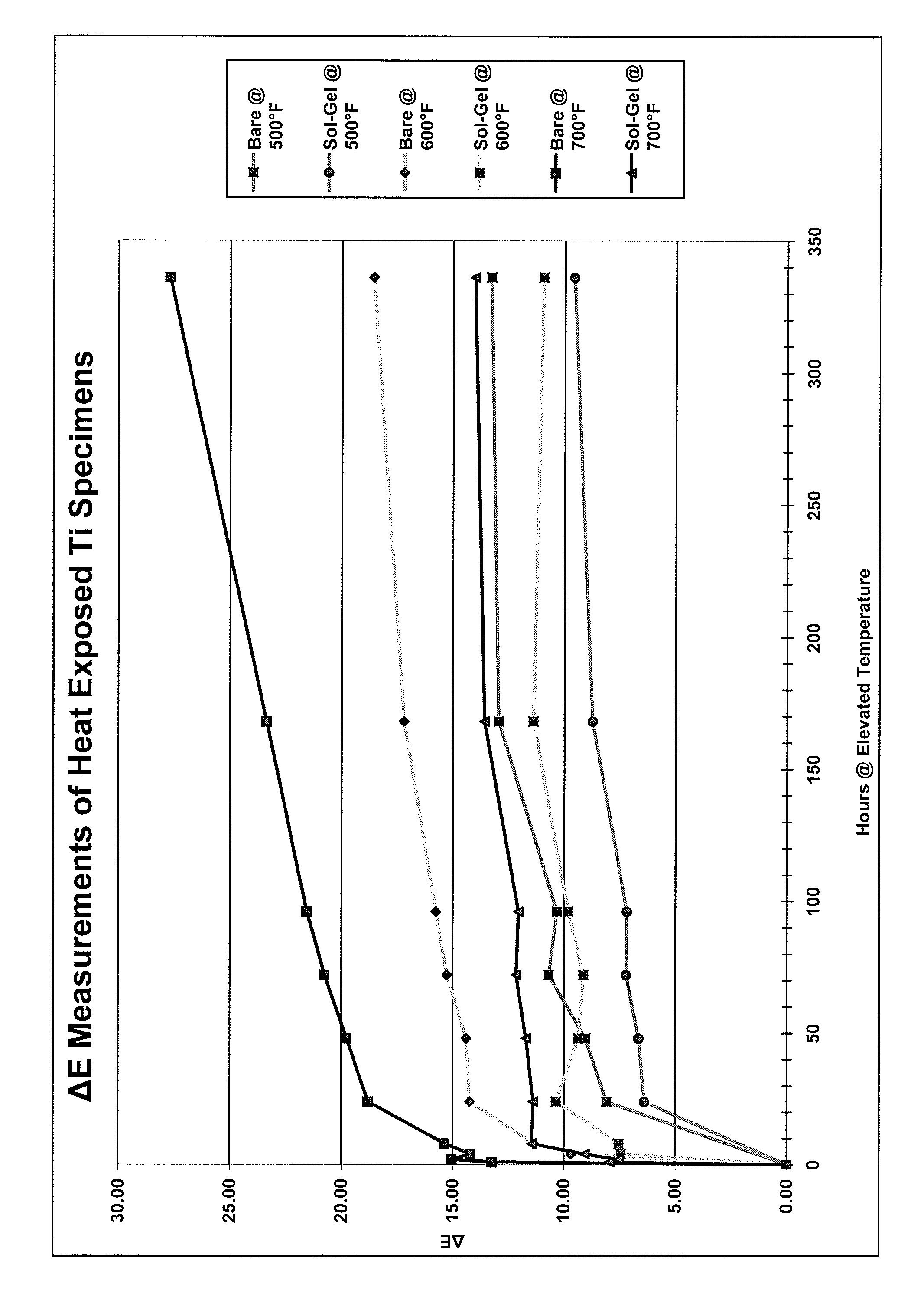Sol-gel coating method and composition
a technology of coating composition and gel, which is applied in the direction of liquid/solution decomposition chemical coating, transportation and packaging, synthetic resin layered products, etc., can solve the problems of inability to withstand the temperature experienced by the tailcone, unaesthetically pleasing discoloration, and metal components of aircraft bodies exposed to higher temperature undetected oxidation and discoloration, etc., to achieve excellent protection against oxidation and discoloration, reduce airflow obstruction, and facilitate handling
- Summary
- Abstract
- Description
- Claims
- Application Information
AI Technical Summary
Benefits of technology
Problems solved by technology
Method used
Image
Examples
example
Example 1
[0031]A sol-gel coating composition was prepared by providing to a vessel a mixture 11.21 vol % 3-glycidoxypropyltrimethoxysilane, 5.61 vol % zirconium n-propoxide (70% in propanol), 2.52 vol % glacial acetic acid, about 0.56 vol % BL-240 surfactant and a balance of the mixture being 80.10% deionized water. The components were combined and blended in the vessel to provide a blended mixture. The mixture was then sprayed onto a titanium surface and the coating was heated to a temperature of 180° F. for 1.5 hours. The coating formed was highly adherent to the surface and resistant to both oxidation and discoloration at temperature up to about 700° F. Color change, measured in ΔE, was measured on titanium samples treated according to Example 1 and bare titanium samples over time at elevated temperatures of 500° F., 600° F. and 700° F., the results of which are shown in FIG. 1.
example 2
[0032]Example 2 utilized the sol-gel components in the amounts utilized for Example 1, wherein 10% by weight of Ni flake or stainless flake was additionally added to the sol-gel composition. The mixture was then sprayed onto a titanium surface and the coating was heated to a temperature of 180° F. for 1.5 hours. The coating formed was highly adherent to the surface and resistant to both oxidation and discoloration at temperature up to about 700° F.
example 3
[0033]A sol-gel coating composition was prepared by providing to a vessel a mixture 11.21 vol % tetraethylorthosilicate, 5.61 vol % zirconium n-propoxide (70% in propanol), 2.52 vol % glacial acetic acid, about 0.56 vol % BL-240 surfactant and a balance of the mixture being 80.10% deionized water. The components were combined and blended in the vessel to provide a blended mixture. The mixture was then sprayed onto a titanium surface and the coating was heated to a temperature of 180° F. for 1.5 hours. The coating formed was highly adherent to the surface and resistant to both oxidation and discoloration at temperature up to about 700° F.
PUM
| Property | Measurement | Unit |
|---|---|---|
| temperature | aaaaa | aaaaa |
| thickness | aaaaa | aaaaa |
| total volume percent | aaaaa | aaaaa |
Abstract
Description
Claims
Application Information
 Login to View More
Login to View More - R&D
- Intellectual Property
- Life Sciences
- Materials
- Tech Scout
- Unparalleled Data Quality
- Higher Quality Content
- 60% Fewer Hallucinations
Browse by: Latest US Patents, China's latest patents, Technical Efficacy Thesaurus, Application Domain, Technology Topic, Popular Technical Reports.
© 2025 PatSnap. All rights reserved.Legal|Privacy policy|Modern Slavery Act Transparency Statement|Sitemap|About US| Contact US: help@patsnap.com

